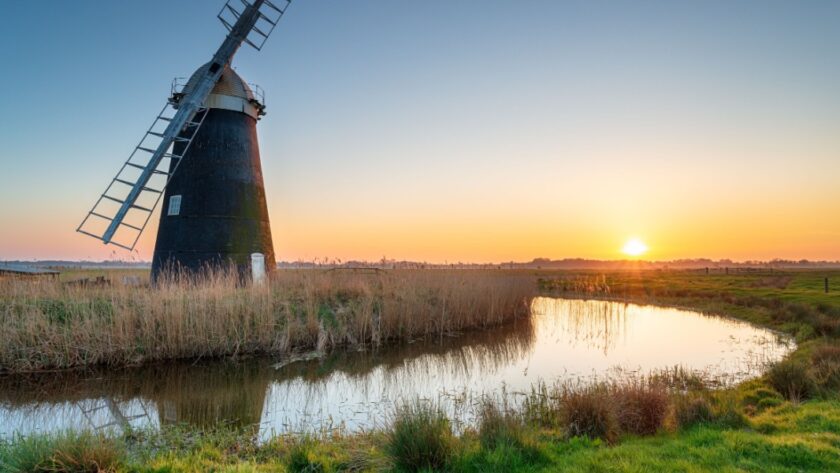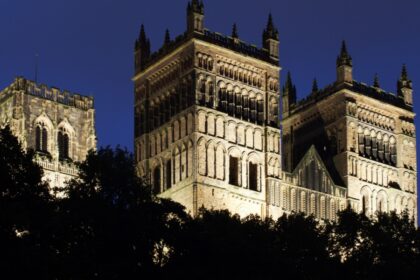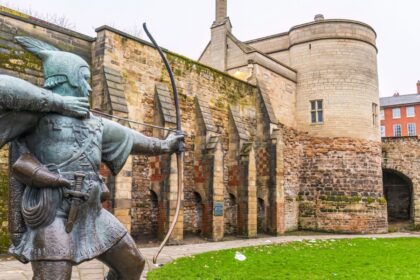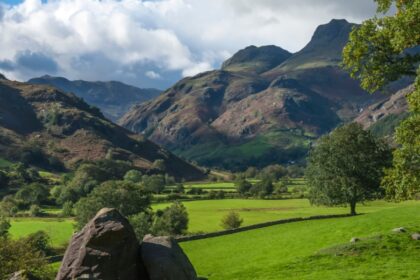Out in the east, where the land flattens and the sky seems to go on forever, you find Norfolk. It is a county that never feels in a hurry. The roads are long and winding, the rivers wander where they please, and the villages appear as if they have been quietly sitting there for centuries, which they mostly have.
People here will cheerfully tell you that Norfolk is different, and it is. The air smells faintly of the sea, the churches are oddly numerous, and the pace of life seems gently removed from the rest of England’s busyness.
Big skies, flat lands and the whisper of reeds
Norfolk’s most famous feature is its landscape. There are no mountains here, nor even many hills to speak of. Instead, you get huge skies, wide open fields, salt marshes, and the Norfolk Broads: a network of rivers and man-made lakes that now form a watery playground for holidaymakers and boaters. Reed beds sway gently in the breeze while herons, kingfishers and the occasional seal go about their business.
In the fens and marshes, you find villages that seem half-merged with the landscape, and narrow lanes that were clearly designed with medieval carts in mind rather than modern SUVs.
A county built on flint, trade and the odd invasion
Norfolk has been attracting attention for quite some time. The Romans came and left behind towns like Venta Icenorum, near Norwich, while earlier still, Boudica led her famous rebellion not far from here. Later came the Saxons and Vikings, followed by medieval merchants who turned Norwich into one of England’s richest cities.
The churches built during these prosperous centuries are everywhere, more than 600 of them in fact, often built of knapped flint that gleams in the sun. Norfolk may not do hills, but it does churches with great enthusiasm.
Norwich, Nelson and a nice bit of shopping
Norwich, the county’s capital, still wears its medieval history proudly. The great Norman castle looms above the city centre, while the cathedral spire rises elegantly above the rooftops. The old cobbled streets of Elm Hill make you feel as though you may accidentally step into the 16th century at any moment.
Further north, the town of Burnham Thorpe gave us Admiral Lord Nelson, who was born here before going on to rearrange the French and Spanish navies at Trafalgar. You can visit his village, though you will not find any grand statues — the locals seem content with a pub called The Lord Nelson and a small church display.
Beaches, windmills and the British seaside
Norfolk’s coastline is wonderfully varied. There are wide sandy beaches at Holkham, dunes at Winterton, and the traditional seaside bustle of Great Yarmouth, where slot machines, candyfloss and the odd donkey ride remain proudly in business.
Old windmills still dot the landscape, once used for pumping water from the lowlands or grinding grain. Many now serve as charming holiday homes, though one suspects they were never designed with indoor plumbing in mind.
Where quiet is part of the charm
But Norfolk’s real appeal often lies in its silences. A boat gliding down a misty Broad at dawn. A footpath along a windswept saltmarsh where the only sound is the distant cry of seabirds. A village green where nothing much seems to have changed since the 1950s.
Norfolk does not shout for attention. It simply waits for you to arrive, breathe out, and slow down with it.





